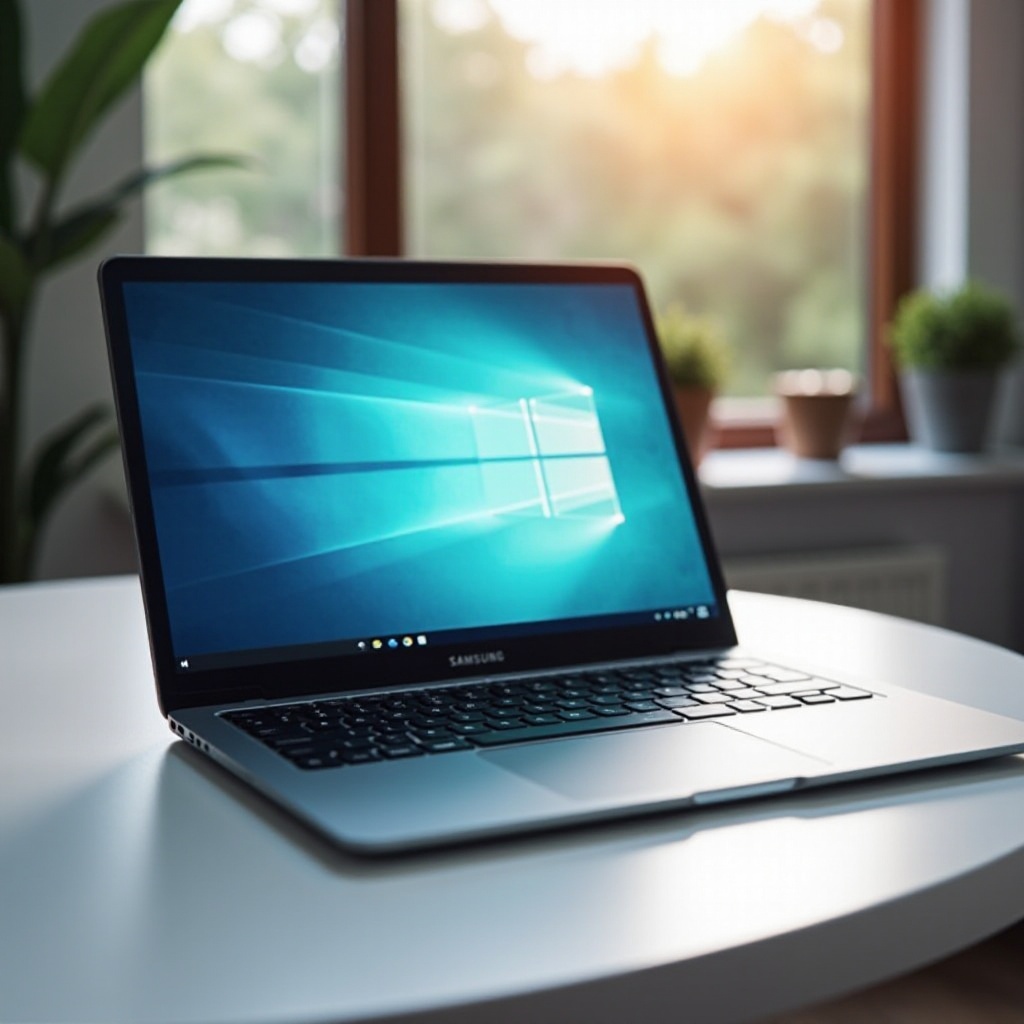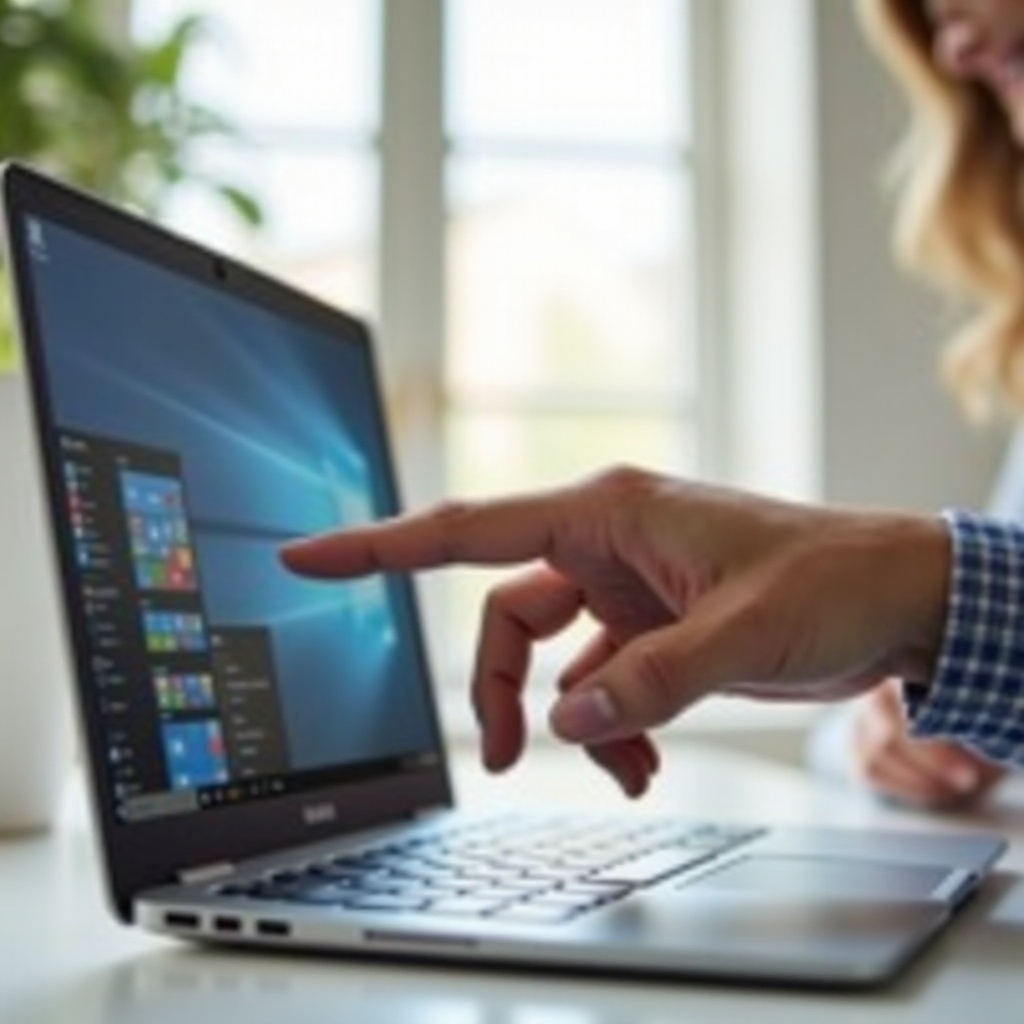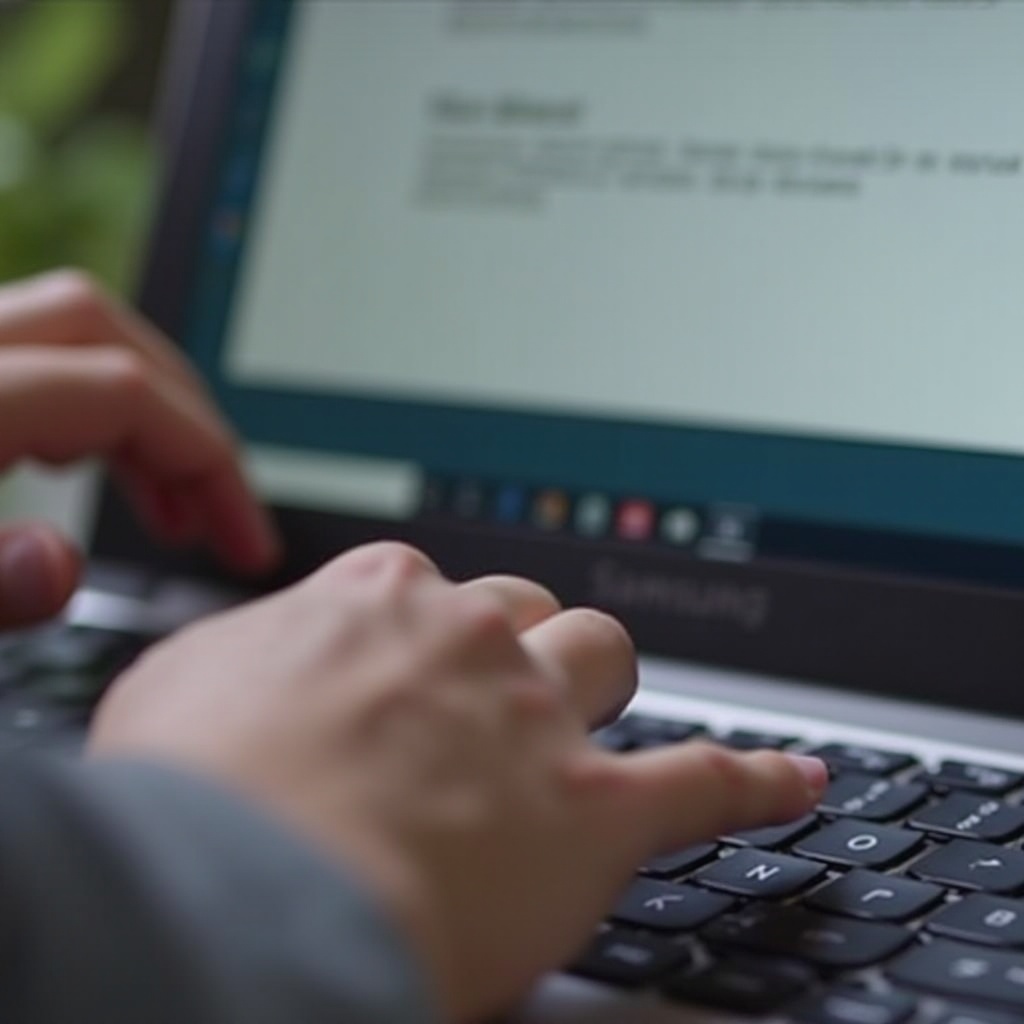Introduction
If you’re wondering how to turn on the touchscreen on a Samsung Chromebook, you’ve come to the right place. Samsung Chromebooks are equipped with versatile touchscreens that enhance the user experience by making tasks more intuitive and faster to execute. This guide covers everything you need to know about activating and using your Samsung Chromebook’s touchscreen feature.

Understanding Your Samsung Chromebook’s Touchscreen Capability
Before diving into the how-to guide, it’s important to understand the touchscreen capabilities of your Samsung Chromebook. This functionality allows you to navigate your Chromebook in a manner similar to using a tablet. You can swipe, tap, and use gestures to open apps, scroll through web pages, and perform various tasks more efficiently. Knowing these capabilities ensures you fully benefit from the touchscreen feature once enabled.
Chromebooks come with different hardware; hence, not all models may support touch functionality. Check your device’s specifications to confirm if your model includes a touchscreen. If it does, activating it is one of the straightforward yet beneficial adjustments you can make to maximize your Chromebook’s potential.

Initial Preparation
Preparing your Samsung Chromebook for touchscreen activation involves ensuring the device is up-to-date with the latest software. Outdated software can hinder touchscreen functionality due to compatibility issues. Follow these steps to prepare:
- Charge your Chromebook to avoid interruptions during the setup process.
- Connect to a stable Wi-Fi network for seamless updates.
- Update your Chromebook to the latest version by navigating to Settings > About Chrome OS > Check for updates.
Once your software is up-to-date, you’re ready to begin the activation process.
Step-by-Step Guide to Enable Touchscreen
Activating the touchscreen on your Samsung Chromebook can be done through a few simple steps. Here’s a detailed guide to help you.
Accessing Chromebook Settings
- Click on the time display at the bottom-right corner of your screen to open the system tray.
- Click on the gear icon to access the Settings menu.
Enabling Touchscreen within Settings
- In the Settings menu, scroll down to the ‘Device’ section.
- Select ‘Touchpad and mouse’ or ‘Touchscreen’ depending on your Chromebook model.
- Toggle the touchscreen option to ‘On.
Verification & Testing
- Once enabled, test the touchscreen by tapping on the screen to open an app.
- Try out different gestures like swiping and pinching to zoom to ensure full functionality.
Using Keyboard Shortcuts to Activate Touchscreen
Sometimes, a quick keyboard shortcut can save time and effort. Samsung Chromebooks support certain shortcuts to manage touchscreen settings.
Key Shortcut Guide
- Press
Search + Shift + Tto toggle the touchscreen on or off.
When to Use Shortcuts
Use shortcuts when you are in a hurry and need to enable or disable the touchscreen without navigating through menus. This is particularly useful during presentations or meetings.
Common Shortcut Mistakes
- Ensure you press the keys in the correct order; any deviation can result in an unintended action.
- Double-check the screen’s current state—toggling too quickly might give the illusion that shortcuts do not work.

Troubleshooting Common Touchscreen Issues
If your touchscreen isn’t responding even after following the steps, don’t worry. Let’s explore some troubleshooting techniques.
Touchscreen Not Responding
- Restart your Chromebook to refresh the system.
- Check for any recent system updates and install them immediately.
Calibration Errors
- If touches are misaligned or inaccurate, recalibrate the touchscreen through the
Settings > Display > Calibrateoption.
Hardware Malfunctions
If the screen remains unresponsive, there might be hardware issues. Contact Samsung support for professional assistance or take your Chromebook to an authorized service center.
Additional Tips and Recommendations
To keep your Chromebook’s touchscreen in optimal condition and make the most out of its features, follow these tips.
Maintenance and Care
- Regularly clean the screen with a microfiber cloth to remove fingerprints and dust.
- Avoid using harsh cleaners that could damage the screen’s coating.
Useful Apps and Extensions
Use apps like Xodo or Google Keep to better utilize your touchscreen for tasks like note-taking and document editing. Chrome Web Store has various extensions designed to enhance touchscreen functionality.
Accessories to Enhance Touchscreen Use
- Consider using a stylus for precision tasks.
- A screen protector can safeguard your touchscreen from scratches and smudges.
Conclusion
Activating the touchscreen on your Samsung Chromebook is a straightforward process that significantly enhances your device’s usability. By following this guide and troubleshooting tips, you’re setting up a smoother, more interactive experience on your Chromebook.
Frequently Asked Questions
Why is my touchscreen not working even after following the steps?
Ensure that your Chromebook model supports touchscreen functionality and it is up-to-date with the latest software.
Can I use a stylus with my Samsung Chromebook touchscreen?
Yes, but ensure it is compatible with your specific model for the best experience.
How do I turn off the touchscreen if I don’t need it?
Use the same settings menu or the keyboard shortcut `Search + Shift + T` to disable the touchscreen when not in use.